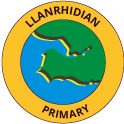Data and Learning
Learning Overview

The enquiry revealed that pupils benefitted significantly from a “little and often” approach, particularly through short burst writing activities. These sessions enabled learners to practise newly introduced super sentences, reinforcing their understanding and application.
Observations indicated that pupils could accurately identify and describe various sentence starters. However, it was noted that broader opportunities were needed to ensure consistent application of these skills across different writing contexts. There was a significant improvement in pupil engagement when comparing 'cold write' engagement with 'hot write' engagement. With 10% of pupils offering ideas of how to vary their writing in the cold conditions and 84% if pupils offering ideas after a block of quick burst writing focusing on super sentences.
Pupil Voice provided valuable insights into the impact of super sentences on writing development. Pupils expressed that these structures helped them articulate their ideas more effectively, describing them as “tools to make their writing better.” They also highlighted the usefulness of super sentences in editing, noting that they offered a clear framework for improving their work. Additionally, pupils reported increased confidence in using a range of punctuation, such as knowing where to place commas.
Evidence from observations, pupil voice, and book looks collectively demonstrated that the majority of pupils have become more independent in both writing and editing. This progress is attributed to the consistent use of the super sentence framework, which has supported learners in developing greater autonomy and precision in their written work.
Final Outputs
This enquiry project, situated within the Welsh educational context, has produced a range of impactful findings that inform and enhance pedagogical practices in writing instruction. Drawing on classroom observations, book looks, and pupil voice, the following key outputs have emerged:
1. Strengthened Writing Through Super Sentences
- Pupils demonstrated increased confidence and independence in writing and editing, supported by the structured use of super sentences.
- These sentence structures acted as success criteria, helping pupils to express themselves more clearly and with greater creativity.
- Learners reported that super sentences gave them the “tools to make their writing better,” particularly in terms of punctuation and sentence variety.
2. Effective Use of Short Burst Writing
- Short, focused writing sessions—referred to as quick writes—proved highly effective in warming up pupils’ thinking and activating prior knowledge.
- These activities allowed learners to practise sentence types in a low-pressure environment, leading to improved fluency and quality in longer writing tasks.
3. Integration of WAGOLLs and Vocabulary Support
- Observations highlighted the need for consistent use of WAGOLL (What A Good One Looks Like) texts to model high-quality writing.
- Vocabulary support sheets and placemats emerged as essential scaffolding tools, especially for pupils who struggle with language versatility.
- These resources helped create a more structured and supportive writing environment, boosting pupil confidence and clarity.
4. Enhanced Editing and Self-Assessment
- Super sentences were particularly effective during the editing phase, enabling pupils to identify areas for improvement and add complexity to their writing.
- Pupils used the sentence structures as a framework for self-assessment, leading to more deliberate and thoughtful revisions.
5. Vocabulary Development in Older Pupils
- For older learners, combining super sentence use with thesaurus and dictionary activities significantly supported vocabulary expansion.
- This dual approach not only improved the sophistication of written work but also deepened pupils’ understanding of language mechanics.
6. Holistic and Responsive Teaching Practices
- The triangulation of evidence from book looks, observations, and pupil voice provided a comprehensive understanding of learner needs.
- This informed a responsive teaching approach that supported both academic progress and emotional wellbeing.
Conclusion
The project has demonstrated that a multifaceted approach—incorporating super sentences, quick writes, WAGOLLs, vocabulary scaffolds, and pupil voice—can significantly enhance writing outcomes. These strategies have empowered pupils to take ownership of their writing, improved their ability to edit and refine their work, and fostered a deeper engagement with language. The findings offer a valuable framework for educators seeking to elevate writing standards across Wales and beyond.
What Went Well...
This enquiry successfully employed a triangulated approach—drawing on classroom observations, book looks, and pupil voice—to gain a comprehensive understanding of how Alan Peat sentence structures influenced writing development among Progression Step 3 pupils.
Classroom observations revealed that the structured use of “super sentences” significantly boosted pupil confidence and creativity. Teachers noted increased independence in writing and editing, particularly during short burst writing sessions, which served as effective warm-ups and encouraged experimentation with sentence variety.
Book look analysis provided clear evidence of progression in sentence complexity and vocabulary use. The integration of WAGOLLs and vocabulary scaffolds (e.g., placemats and support sheets) was especially effective in supporting learners who struggled with language versatility, ensuring equitable access to high-quality writing models.
Pupil voice played a pivotal role in shaping the enquiry. Learners articulated how super sentences gave them the “tools to make their writing better,” and described how these structures supported their editing and self-assessment processes. Older pupils also highlighted the benefits of combining sentence strategies with thesaurus and dictionary work to enhance vocabulary.
Overall, the enquiry’s strength lay in its holistic and responsive methodology, which not only informed adaptive teaching practices but also fostered pupil agency and engagement. This multifaceted approach offers a replicable model for improving writing outcomes through structured sentence instruction.
What Was a Challenge: Enquiry Reflections
A key challenge in this enquiry was managing the volume of Alan Peat sentence types introduced across the school. While these structures provided valuable scaffolding for improving sentence variety and punctuation, the extensive range made it difficult to ensure consistent understanding and meaningful application. Teachers often struggled to allocate sufficient time for pupils to learn, practise, and embed each sentence type, which occasionally led to superficial use rather than deep mastery.
Another important consideration was the risk of being too prescriptive, which could inadvertently limit pupil creativity. While structured sentence types offered useful tools, some pupils felt constrained by the expectation to include specific forms in their writing. This tension between structure and freedom highlighted the need for a balanced approach—one that empowers pupils to use sentence strategies flexibly and purposefully, rather than formulaically.
To address these challenges, the enquiry recommends allowing for dedicated time to explore sentence types in depth, and promoting creative autonomy by encouraging pupils to choose and adapt sentence structures to suit their individual writing style and intent.










